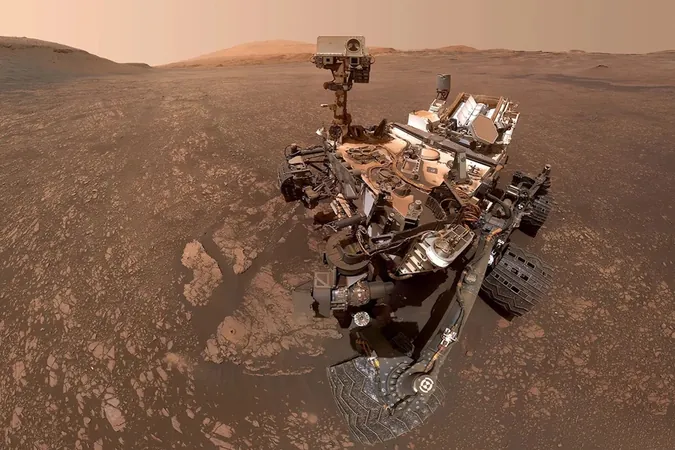
NASA's Curiosity Rover Uncovers Mars' Atmospheric Secrets: A Breakthrough Discovery!
2025-04-22
Author: Emma
In an astonishing exploration of the Red Planet, NASA's Curiosity rover has journeyed about 21 miles (34 kilometers) over 13 years, searching for clues about Mars' ancient atmosphere and its potential for life. A groundbreaking discovery might finally answer the mystery behind Mars’ transformation from a once-wet, life-sustaining world to the dry desert we see today.
Curiosity recently stumbled upon large deposits of carbon within the sulfate-rich layers of Mount Sharp, located in the Gale Crater impact basin. This revelation, detailed in a recent edition of Science, stems from data collected at three drilling sites revealing an abundance of siderite—an iron carbonate mineral that has been a vital missing link in understanding Mars' wet and hospitable past.
In essence, when water and carbon dioxide interact, they form carbonate minerals. The newly discovered siderite supports the theory that Mars once boasted a thick, carbon-rich atmosphere accompanied by liquid water on its surface. Previously, scientists lacked sufficient evidence of carbonate minerals to validate this hypothesis—until now.
"The discovery of abundant siderite in Gale Crater is a crucial and unexpected advancement in our understanding of Mars’ geological and atmospheric evolution," stated Benjamin Tutolo, the lead author and an associate professor at the University of Calgary. His research certainly casts new light on how Mars may have been capable of supporting life.
While researchers have long theorized a carbon dioxide-rich atmosphere on Mars, Curiosity's findings offer the first tangible mineral evidence for this theory. Tutolo emphasizes, "It demonstrates that the planet was indeed habitable, confirming our models about habitability."
As Mars’ atmosphere gradually thinned, carbon dioxide began its transformative journey into rock form. This transition had significant implications; it altered the planet's ability to retain warmth and surface water.
Equipped with a specialized drill, Curiosity bores into Martian rocks, collecting powdered samples that reveal their ancient secrets. Drilling just a few centimeters into the Martian surface provides a glimpse into the minerals that formed approximately 3.5 billion years ago, according to Thomas Bristow, a research scientist at NASA’s Ames Research Center.
Curiosity's subterranean discoveries suggest that carbonate minerals may be concealed beneath other layers, explaining why previous missions struggled to uncover them. If these minerals prove abundant in other sulfate-rich regions of Mars, they could signify favorable conditions for a warm, liquid-water environment in the planet's distant past. This finding reshapes our understanding of the Martian landscape and the potential for life beyond Earth.









 Brasil (PT)
Brasil (PT)
 Canada (EN)
Canada (EN)
 Chile (ES)
Chile (ES)
 Česko (CS)
Česko (CS)
 대한민국 (KO)
대한민국 (KO)
 España (ES)
España (ES)
 France (FR)
France (FR)
 Hong Kong (EN)
Hong Kong (EN)
 Italia (IT)
Italia (IT)
 日本 (JA)
日本 (JA)
 Magyarország (HU)
Magyarország (HU)
 Norge (NO)
Norge (NO)
 Polska (PL)
Polska (PL)
 Schweiz (DE)
Schweiz (DE)
 Singapore (EN)
Singapore (EN)
 Sverige (SV)
Sverige (SV)
 Suomi (FI)
Suomi (FI)
 Türkiye (TR)
Türkiye (TR)
 الإمارات العربية المتحدة (AR)
الإمارات العربية المتحدة (AR)